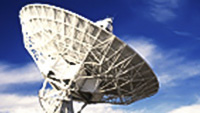Search and order online
Pangaea Training September 2023:
Pangaea September 2023 – Third week, Lanzarote
The clip you see playing above is a web quality MP4. You may acquire the broadcast quality version(s) of this clip listed below. You may wish to check out the encoding settings of the available broadcast quality version(s) first.
Listed below are the available broadcast quality version(s) of this clip (so not including the web quality MP4 playing above). You may:
- Title Pangaea Training September 2023 - Pangaea September 2023 – Third week, Lanzarote
- Length 00:05:47
- Footage Type TV Exchanges
- Additional Formats:
- Copyright ESA
- Description
ESA’s PANGAEA training course prepares astronauts and space engineers to identify planetary geological features for future missions to the Moon, Mars and asteroids.
The third week of the training saw astronauts exploring the volcanic landscapes of Lanzarote in Spain.
The PANGAEA campaign – named after the ancient supercontinent – provides the crew with introductory and practical knowledge to find interesting rock samples as well as to assess the most likely places to find traces of life on other planets. Leading European planetary geologists share their insights into the geology of the Solar System.
Course participants of the sixth edition in 2023 are ESA astronaut Thomas Pesquet, NASA astronaut candidate Jessica Wittner and Takuya Onishi from the Japanese space agency. The astronauts used the Handheld Universal Lunar Camera (HULC) to document field exploration in Lanzarote in September 2023.
The NASA engineers behind the lunar camera worked with ESA to put the new camera through its paces during the PANGAEA training programme. Capturing images will be key for documenting scientific discoveries during future Moon missions. One objective during PANGAEA was to select the most suitable lenses.
The crew used the camera in broad daylight, but also in the darkness of volcanic caves to simulate extreme conditions for lunar photography.
The new lunar camera is built from professional off-the-shelf cameras with great sensitivity to light and state-of-the-art lenses. To prepare it for space, the NASA team made several modifications, including adding a blanket for dust and thermal protection – temperatures range from minus 200 to 120 degrees Celsius on the Moon – as well as a new set of ergonomic buttons for astronauts wearing gloves in bulky spacesuits.
More about the Artemis Moon camera tests in Europe.
Credits: ESA–V. Crobu




